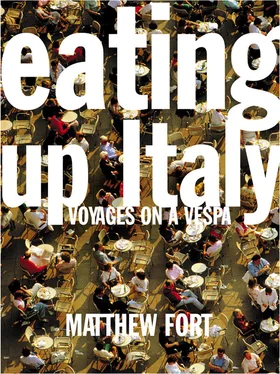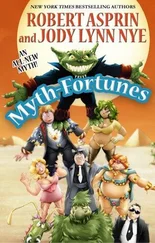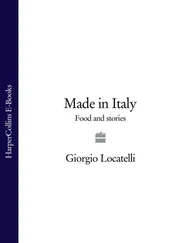Voyages on a Vespa

FOR LINDSAY
Cover
Title Page
Dedication
Note
1 Whetting the Appetite
Melito di Porto Salvo – Reggio di Calabria
2 King Pig
Reggio di Calabria – Vibo Valentia – Pizzo – Pianapoli
3 Getting Stuffed
Pianapoli – Castrovillari – Diamante – Scalea – Maratea – Sapri – Sala Consilina – Naples
4 Turbulence, Tripe and Taralli
Naples
5 One for the Road, Again
Naples – Piedimonte Matese
6 Sweet Charms
Piedimonte Matese – Sulmona – Fara San Martino – Guardiagrele
7 Olive Branches and Potato Passions
Guardiagrele – Penne – Ascoli Piceno
8 Pulses from the Old Year
Ascoli Piceno – Serra de’ Conti – Portonovo – Ancona
9 ‘Sara Un Si Ameno Giorno Propizio Ai Viaggiator’
Ancona – Cervia – Comacchio
10 The Supreme Sausage
Comacchio – Ferrara – Mantua – Cremona
11 The Mozart of Mushrooms
Cremona – Casale Monferrato – Asti – Bra – Turin
12 Mixing Memory and Desire
Turin
Searchable Terms
Acknowledgements
Other books by Matthew Fort
Copyright
About the Publisher
Italian cooks are not so obsessively concerned with precise measurements in recipes as the British tend to be. Expressions such as ‘a handful of’ and ‘the right amount of’ abound, and cooking times seem non-existent. This stems partly from the natural confidence of people who cook on a daily basis, and partly from the fact that no two cooks can agree on ingredients, let alone the proportions in which they should be added to a dish. I have tried to formalise the recipes that I have collected without losing the character of the originals. I may not have succeeded in every case, but it seems to me better to respect a living culture than opt for arid exactitude.
MELITO DI PORTO SALVO – REGGIO DI CALABRIA
Crostino di pane di grano con pomodoro, peperoncino e origano
The biscuity gold slice of toast was heaped with tiny cubes of cardinal-red tomato, shiny with oil and juices, and flecked with dark green particles. The crostino was explosively crunchy, with a slightly malted flavour. The tomato was clean and sweet, its flavour sharpened by the exhilarating intensity of the dried oregano, the warmth of chilli rising up through fruit and herb.
MELITO DI PORTO SALVO – REGGIO DI CALABRIA
First came the antipasti: neonati, minuscule fish no bigger than a toothpick, fried to crisp little nuggets; a couple of slices of burly prosciutto di Calabria; fleshy, acrid black olives; and some chewy hanks of melanzane sott’olio, aubergines preserved in oil; tomato, chilli and oregano, on crostini. The biscuity gold slice of toast was heaped with tiny cubes of cardinal-red tomato, shiny with oil and juices, and flecked with dark green particles. The crostino was explosively crunchy, with a slightly malted flavour. The tomato was clean and sweet, its flavour sharpened by the exhilarating intensity of the dried oregano, the warmth of chilli rising up through fruit and herb.
Next there was the primo piatto, tagliolini with tiny artichokes and fennel braised to an amber, emollient, vegetal softness. It had a sensuous, sybaritic luxury, slithering down my throat. Another plate, the secondo piatto: a random selection of very fresh grilled baby cuttlefish and fat prawns, their caramelised, marine sweetness cut by the sharp acidity of lemon juice. Finally a salty, sharp young pecorino and a couple of early nectarines, full of juicy sweetness that trickled down my chin.
An agreeable sensation of repletion suffused my being from the tips of my toes to the remote corners of my brain. This was what I had come for. Each mouthful was a reminder of the essential plainness, and grace, of Italian food. There were no extraneous sauces, no distracting garnishes, no mint sprigs or dashes of fancy oils. The flavours were clean and clear. The beauty of each dish lay in the quality of the ingredients, and in the understanding with which they were cooked. I mopped my chin and finished off the last of the red wine, which tasted of chemicals and damsons. Lunch was done. There was time for an espresso.
‘I think you need a glass of bergamino as well, signore,’ said the waiter.
‘Bergamino?’
‘The liquore from the bergamotto.’
In my ignorance I had always assumed that oil of bergamot, a staple for a thousand perfumes, eau de toilettes and aftershave lotions, not to mention the fragrant, vaguely medicinal liquore, came from a flower. Indeed, the fragrance of the flower, la zagara, filled the blustery breezes here in Melito di Porto Salvo, the southernmost point of the southernmost coast of mainland Italy. But it was the large, rounded, lemon-yellow fruit that was the basis of a substantial industry in the area, with a consorzio del bergamotto based in nearby Reggio di Calabria and a tightly controlled group of producers.
Prominent among them was Signor Enzo Familiare, whom I met later that afternoon. He was a short, handsome man of around seventy, I guessed, with the lively manner of an elderly leprechaun. We wandered among the ranks of immaculately maintained trees in his groves tucked away off the main road, just outside Melito. As he pottered from one tree to another, he caressed their trunks or let the leaves trail through his fingers, speaking about them all the time with the fond indulgence of a kindly uncle. Words gushed from him. I watched his lips. I listened to his voice. I understood perhaps one quarter of what he was telling me.
‘The name “bergamot” probably comes from the Turkish begarmudi, meaning the Lord’s pear,’ Signor Familiare said. ‘The harvest is over for the moment. Picking the fruit lasts normally from November to March. The tree also grows in Central America, but there the skin of the fruit is not as productive or as fragrant as those that grow only on a narrow strip about one hundred kilometres long between Villa San Giovanni and Gioiosa Ionica and between the sea and the slopes of the Aspromonte a few kilometres inland.’ Bergamot, he explained, was ‘un incidente felice della natura’.
A happy accident of nature – it was a cheery way of describing the anomaly of this oddball member of the citrus family produced by spontaneous genetic modification. No one seems to know exactly how the first bergamot came about, although one account I had come across claimed that during the eighteenth century a tree was discovered growing in the gardens of the Archbishop of Naples which bore fruit that looked like something between a lemon and a grapefruit. Naples has an impressive record in the annals of miracles, but, if true, the sudden appearance of the bergamot may be counted as among the most enduring.
The qualities of the genetic freak were quickly recognised after its discovery, and during the eighteenth century a substantial industry sprang up to exploit it. In those days the essential oils were painstakingly extracted by hand, the skin of the fruit being striated to allow the oils to ooze out on to a sponge, which rested on a stick over a bucket. Little by little the oils would then drip out of the sponge into the bucket – a process that sounded soothingly ruminative. Needless to say, those days are long gone, and today the extraction is done by the quicker, more reliable, but less romantic machine, with the consorzio in charge of ensuring quality control. It takes two hundred kilos of fruit to make one kilo of essence.
Читать дальше













